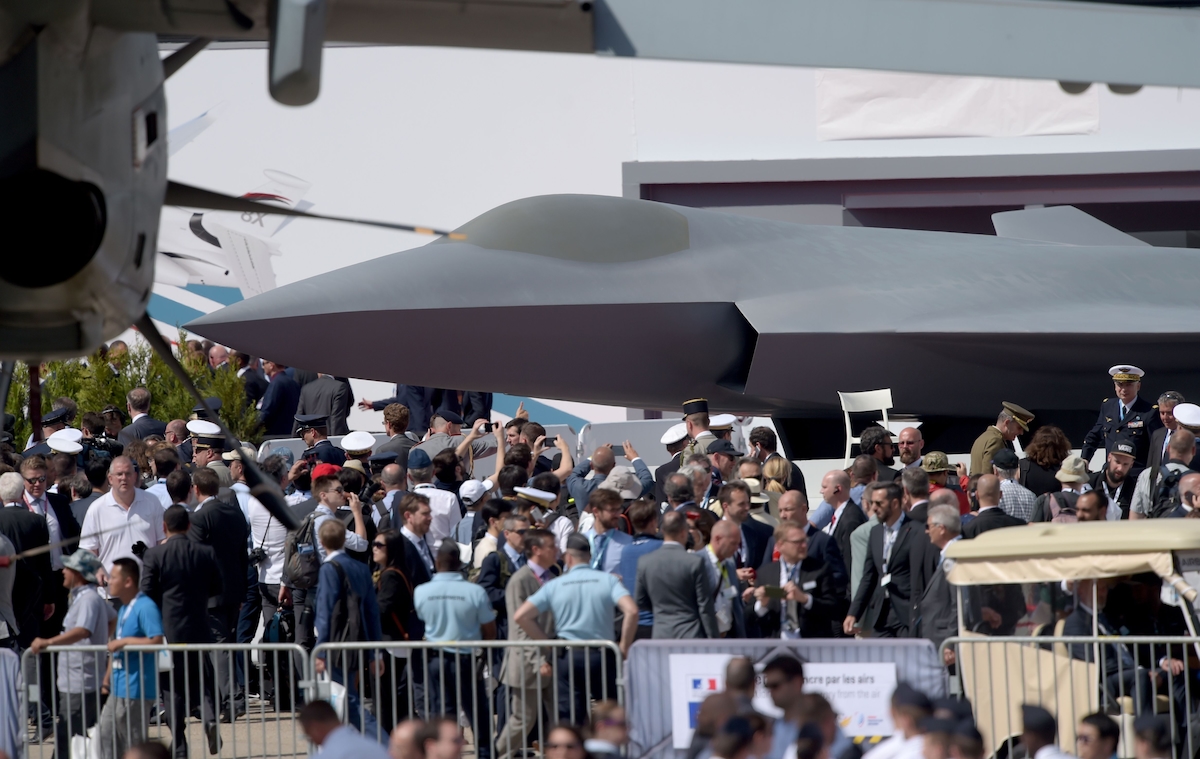By: Vivienne Machi 41 minutes ago

STUTTGART, Germany – Spain’s Indra will head up a team of three industry partners to build the sensor suite for the Franco-German-Spanish advanced fighter jet and weapon system programs, the company announced Nov. 23.
France’s procurement office, the Direction Générale de l’Armement (DGA), signed a contract on Monday with the Spanish company on behalf of the three nations involved in the Future Combat Air System (FCAS) and Next-Generation Weapon System programs. Indra will work together with French company Thales and German industry consortium FCMS to design and develop the “connected and distributed architecture of sensors” to provide situational awareness, and boost platform survivability, the company said in a release.
The contract details a one-year period for the team to design the sensor packages as part of the larger program’s Phase 1A concept study, and could be extended for an additional six months. Phase 1A was launched this past February and will last for about 18 months, per program officials.
While much of the details surrounding the sensors remains to be seen after the design phase is complete, the three organizations involved said the suite will contribute to the FCAS and next-generation weapon system’s situational awareness “and ability to operate without being detected.”
The advanced sensor suite is one of seven technology “pillars” that encompass the Future Combat Air System program, along with a sixth-generation fighter jet, advanced “remote carrier” drones, a new jet engine, a next-generation weapon system, stealth technology, and an air combat cloud system. “The sensors pillar consortium looks forward to working together with the other NGWS/FCAS pillars in order to optimize the design and integration of the sensors within the system and platforms,” the three organizations said in the release.
The FCAS program is led by Airbus and Dassault Aviation, with Indra leading Spain’s industry participation. Madrid joined the program earlier this year, nearly three years after France and Germany jointly announced plans to build a new fighter jet and other advanced technologies. The teams are currently working in tandem on the Joint Concept Study phase and the Phase 1A demonstrator effort, both expected to culminate around summer 2021.
Initial demonstrators for the fighter aircraft and next-generation weapon system are expected by 2026, with the full development program expected to start in 2027. Fielding is slated to begin in the 2040 timeframe, with the fighter aircraft expected to replace France’s Dassault Rafale and Germany and Spain’s Eurofighter Typhoon fleets.

 www.defensenews.com
www.defensenews.com

The full-scale jet fighter model of the Systeme de Combat Aerien Futur (SCAF), the French-German-Spanish new generation Future Combat Air System (FCAS), is presented during the 53rd International Paris Air Show at Le Bourget Airport near Paris, on June 17, 2019. (Eric Piermont/AFP via Getty Images)
STUTTGART, Germany – Spain’s Indra will head up a team of three industry partners to build the sensor suite for the Franco-German-Spanish advanced fighter jet and weapon system programs, the company announced Nov. 23.
France’s procurement office, the Direction Générale de l’Armement (DGA), signed a contract on Monday with the Spanish company on behalf of the three nations involved in the Future Combat Air System (FCAS) and Next-Generation Weapon System programs. Indra will work together with French company Thales and German industry consortium FCMS to design and develop the “connected and distributed architecture of sensors” to provide situational awareness, and boost platform survivability, the company said in a release.
The contract details a one-year period for the team to design the sensor packages as part of the larger program’s Phase 1A concept study, and could be extended for an additional six months. Phase 1A was launched this past February and will last for about 18 months, per program officials.
While much of the details surrounding the sensors remains to be seen after the design phase is complete, the three organizations involved said the suite will contribute to the FCAS and next-generation weapon system’s situational awareness “and ability to operate without being detected.”
The advanced sensor suite is one of seven technology “pillars” that encompass the Future Combat Air System program, along with a sixth-generation fighter jet, advanced “remote carrier” drones, a new jet engine, a next-generation weapon system, stealth technology, and an air combat cloud system. “The sensors pillar consortium looks forward to working together with the other NGWS/FCAS pillars in order to optimize the design and integration of the sensors within the system and platforms,” the three organizations said in the release.
The FCAS program is led by Airbus and Dassault Aviation, with Indra leading Spain’s industry participation. Madrid joined the program earlier this year, nearly three years after France and Germany jointly announced plans to build a new fighter jet and other advanced technologies. The teams are currently working in tandem on the Joint Concept Study phase and the Phase 1A demonstrator effort, both expected to culminate around summer 2021.
Initial demonstrators for the fighter aircraft and next-generation weapon system are expected by 2026, with the full development program expected to start in 2027. Fielding is slated to begin in the 2040 timeframe, with the fighter aircraft expected to replace France’s Dassault Rafale and Germany and Spain’s Eurofighter Typhoon fleets.

Indra to lead sensor development for mainland Europe’s next-gen fighter
The companies involved said the suite will contribute to the FCAS and next-generation weapon system’s situational awareness “and ability to operate without being detected.”

